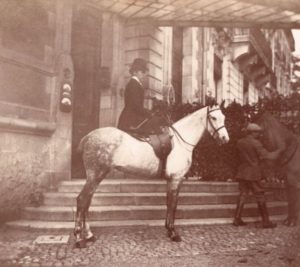
23 Jul 2021 Side Saddle Ladies Stir a Revolution
American women achieved the right to vote in 1920, but female equestriennes stirred another revolution in the saddle.
The women-led equestrian revolution that tore the nation into conflicting camps wasn’t waged between men and women but set two opposing geographic cultures ablaze. The battle between ladies in the East versus those ‘out West’ upended the tradition of riding side saddle and ushered a defiant set of female riders.
British riding master, Colonel Hitchcock, declared, “the sidesaddle is the most decorative, dignified, and graceful method, and pleases the male eye, whi ch prefers the ultra-feminine woman to the type which emulates the male in attire or atmosphere.”
ch prefers the ultra-feminine woman to the type which emulates the male in attire or atmosphere.”
Deadly side effects of riding side saddle and trapping a woman on the left side of a galloping horse, be damned!
Riding skirts and corsets not only kept the rider erect but interfered with movement in the saddle and blocked a rider’s ability to signal the right side of her horse with a thigh, knee, calf, or heel.
One woman led an equestrian and political revolution – Inez Milholland liberated women from the side saddle and fought for the right to vote from the back of a horse. Mounted on a white horse wearing a Joan-of-the-Arc-inspired costume, Milholland was described as “a symbol of the free women of the future, crowned with the star of hope, circled with the blue mantle of freedom and breasted with the torch of knowledge” at a women’s right to vote march in Washington, D.C. on the eve of President Woodrow Wilson’s inauguration.
The 1913 march disintegrated into violence when a mob attacked the Suffergette marchers and lunged at Milholland to pull her from her side-saddle. Instead of retreating, Milholland spurred her white steed, rushing into the rioters shouting, “You men ought to be ashamed of yourselves!” Injuries mounted and ambulance drivers whisked away wounded spectators and Suffergettes alike.
Soon after Inez Milholland’s death in November 1916, the side-saddle became inextricably linked to political freedom and equality in the saddle. Seven years passed before women had the right to vote. Social change marches slowly, sometimes, but by the early 1930s, women abandoned the side-saddle to favor the riding style men and women employ today.
Anna

